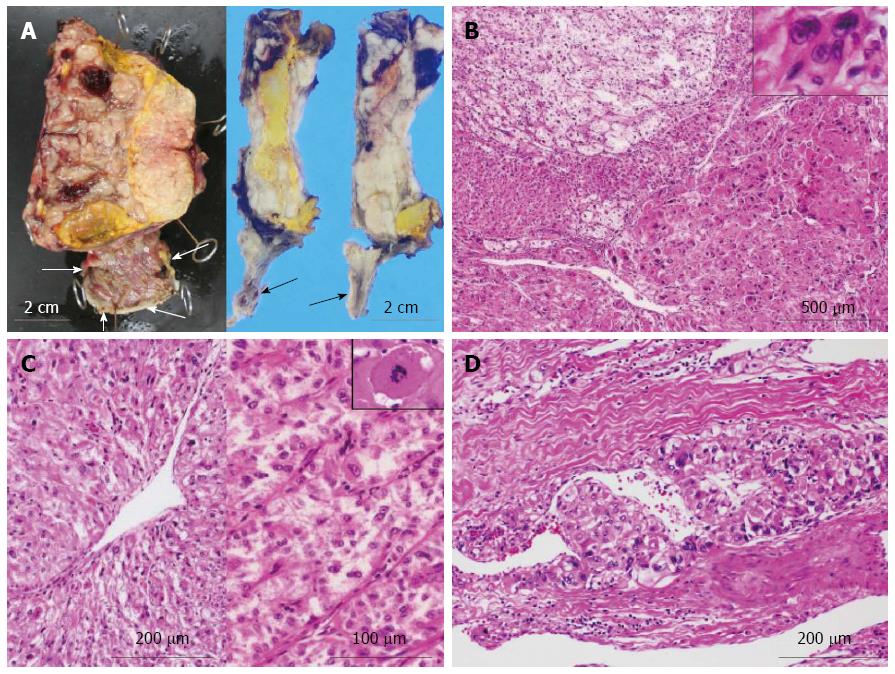Copyright
©The Author(s) 2015.
World J Gastroenterol. Jan 28, 2015; 21(4): 1349-1356
Published online Jan 28, 2015. doi: 10.3748/wjg.v21.i4.1349
Published online Jan 28, 2015. doi: 10.3748/wjg.v21.i4.1349
Figure 3 Gross and microscopic examination of the resected specimen of malignant perivascular epithelioid cell tumor arising in the stomach.
A: Gross examination at surgery (left) and after fixation (right) showed that the huge tumor, measuring 73 mm × 65 mm × 61 mm, had gray-whitish to yellow-whitish cut surfaces with some hemorrhagic and yellowish necrotic foci, attached to the serosa of the lesser curvature on the gastric body (arrows) and separated from the left kidney and adrenal gland. Bars = 2 cm; B: Microscopically (low to medium power view), the abdominal tumor predominantly consisted of sheets or nests of markedly atypical epithelioid cells having hyperchromatic pleomorphic nuclei and abundant eosinophilic to clear cytoplasm, admixed with a large number of multi-nucleated giant cells (inset), supported by delicate fibrovascular septa (HE stains). Bar = 500 μm; C: On high-power view, these nests displayed an alveolar or trabecular growth pattern (right), characteristically displaying a radial perivascular fashion (left) (HE stains). The large tumor cells sometimes showed atypical mitosis with relatively high mitotic rates (more than 2 per 10 high-power fields) (inset). Bars = 200 μm or 100 μm; D: Moreover, vascular permeation of the infiltrative tumor nests was partly noted in the peripheral areas (HE stains). Bar = 200 μm.
- Citation: Yamada S, Nabeshima A, Noguchi H, Nawata A, Nishii H, Guo X, Wang KY, Hisaoka M, Nakayama T. Coincidence between malignant perivascular epithelioid cell tumor arising in the gastric serosa and lung adenocarcinoma. World J Gastroenterol 2015; 21(4): 1349-1356
- URL: https://www.wjgnet.com/1007-9327/full/v21/i4/1349.htm
- DOI: https://dx.doi.org/10.3748/wjg.v21.i4.1349









